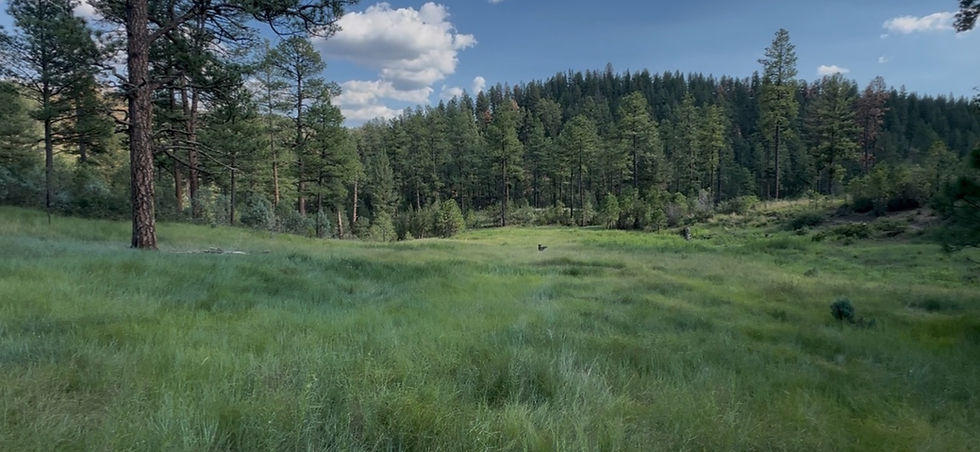Be Storm Ready: Hurricane Season Tips for Farmers and Forest Landowners
- Courtney Columbus

- Jul 30
- 3 min read

As we approach the peak of the Atlantic hurricane season, it’s a good time for farmers and forest landowners to prepare. NOAA predicts an “above-normal” season this year, making preparation even more important to reduce storm-related losses.
How farmers and forest landowners can prepare for hurricane season:
Take time-stamped photos of property, equipment, crops and livestock. The Datestamper app can be used to add the date to the photo.
Secure important documents in a waterproof container.
Check that any insurance policies are current and cover potential hazards.
In case of damage:
When safe to do so, take photos of any damage sustained and take notes about what occurred.
Report major damage to emergency services.
For recovery support, seek assistance from local agricultural extension offices or federal agencies including the Farm Service Agency (FSA), the U.S. Department of Agriculture (USDA), and the Natural Resources Conservation Service (NRCS).
For additional information on disaster assistance programs, visit our Farmer Resources page.
Check out the article below on this month’s Spotlight farm, Finca Tierra Negra, to learn more about how agroforestry can build resiliency to extreme storms.
Spotlight on Resilience: Finca Tierra Negra
This month, meet Altair Rodríguez, who’s transforming her family’s farm in the Dominican Republic into a model of resilience through agroforestry. Her story shows how working with nature can help withstand hurricanes — and heal history.
At Finca Tierra Negra, a century-old family farm in the Dominican Republic, Altair implements ecological agricultural practices to cultivate shade-grown cacao, plantains, and other crops, including avocado, breadfruit, and sour orange. On a small scale, Altair also plants other fruits and annual crops, including a beautiful vegetable and herb garden.

The farm is an island of tall trees amidst fields of plantains and cassava a few miles outside the town of La Vega, in the Dominican Republic’s main agricultural valley. Altair, the founder of Finca Tierra Negra – in English, Black Earth Farm – describes the 30-hectare farm as “the only remnant of the agroforestry systems that were traditionally used to grow cacao in this area of the Cibao valley.”
To protect against the damaging effects of hurricanes and tornados, Altair incorporates practices such as windbreaks in addition to pruning trees, especially at the beginning of hurricane season. Pruning after damage occurs can also help trees recover, she explains.
Altair’s path to agriculture has been a journey of reconnection. About 10 years ago, she began working in ecological agriculture and embarked on the project that would become Finca Tierra Negra. Previously, she had studied law, specializing in human rights. The farm project has brought meaning and purpose to her life, she says.
“I love being in a place that I'm helping to preserve and regenerate. I love the day-to-day work with plants…[and] preserving the living soil,” Altair says. “What I love most about being here is that I feel like I've reconnected with the path that makes the most sense to me.”

Her family’s history on this land dates back more than 100 years. Altaír’s great-grandfather Juan Rodríguez García fought back against the dictator Rafael Trujillo, losing his life and the family farm in the process. Even their house was burned down, Altair explains. The concrete base of that house still stands at the farm today, where dragonfruit vines now drape over it. Earlier this year, the Dominican government declared Juan a national hero.
“For us, this place represents…preserving his memory. And on a macro level, being able to use this place as an example of what is possible when we cultivate agriculture in harmony with nature, which is what many people knew how to do before – especially the Indigenous communities of our region,” Altair explains.

In the future, Altair aims to establish an agroforestry school and host educational workshops for people who are interested in learning more about topics such as how to make compost, prune trees and start a garden – skills that can help people live more sustainably.
“For a long time, we knew how to work in harmony with trees, with nature, with the forest, but that knowledge has been lost. We want to rescue and promote that knowledge.”
🌿 Want to Protect Your Farm from Hurricanes?
➡ Visit our Farmer Resources page
➡ Contact your local NRCS or FSA office
➡ Stay connected: Follow Asekia for more stories like this one
This newsletter was written by Courtney Columbus, reviewed by Nolo Martínez, and produced by Jessica Zafra.



Comments